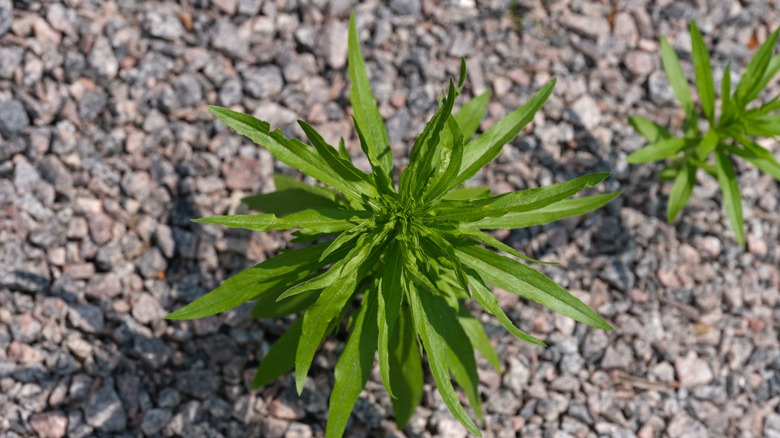Put An End To Weeds Growing In Gravel With The Help Of A Common Household Item
There are plenty of tricks to prevent weeds from growing in your gravel, but sometimes it can feel like a never-ending problem. However, that stack of old newspapers collecting dust in your recycling bin just might be the answer you're looking for. Some homeowners use a black plastic barrier in between the gravel and dirt, but that can stop water from draining and cause pooling and erosion. When newspaper is reused as an underlayer, it creates an effective barrier that can block the sunlight from reaching weed seeds while still allowing water drainage, and it's biodegradable. The paper's fibers form a dense mat that will smother any existing weeds and help prevent new growth. Then, it gradually decomposes into the soil, enriching it without leaving any synthetic residue.
This is perfect for gravel driveways and pathways where traditional weeding can become tedious, but chemical treatments may affect nearby plant life or water runoff areas. The newspaper method works by cutting off the growth cycle of weeds before it can start. A thick layer prevents the sunlight from penetrating, which would normally trigger seed germination, while creating an actual barrier that's too thick for most weeds to get through. As the paper decomposes over a few months, it forms a layer that can actually improve the gravel's stability. Unlike landscaping fabric, which eventually becomes torn up and compromised as soil works its way through the weave, newspaper maintains its integrity longer and is completely eco-friendly.
The right way to use newspaper under gravel for maximum weed control
Proper installation makes all the difference in the effectiveness of the newspaper method. You'll want to remove all existing weeds from the gravel first and level the area as best as you can. Then, water the soil lightly to help the newspaper stay put. Try to overlap the sheets by at least six inches to prevent any gaps where weeds can sneak through. You'll want at least eight sheets for a single layer, so using whole sections, as opposed to single sheets, will help you save time and get better coverage. If you know you have some stubborn weeds, like bindweed or thistle, you could add a layer of cardboard beneath the newspaper to help suppress their aggressiveness.
Once done, water the ground again and immediately cover the paper layer with 2 to 3 inches of gravel to weigh it down. This will help the layers bond and protect the paper from blowing away in the elements. For long-term maintenance, you'll want to refresh the newspaper annually in problem areas or whenever weeds begin to reappear. Combine this with occasional weed control spot-treatments, and you should have complete control of the problem. You can also use an often overlooked solution to preventing weeds in gravel by just adding more gravel. During rainy seasons, take some time to check for any exposed paper edges and cover them up to maintain consistent coverage — just be careful when raking the gravel level. These simple enhancements can extend your weed-free gravel for an entire growing season with minimal effort.

